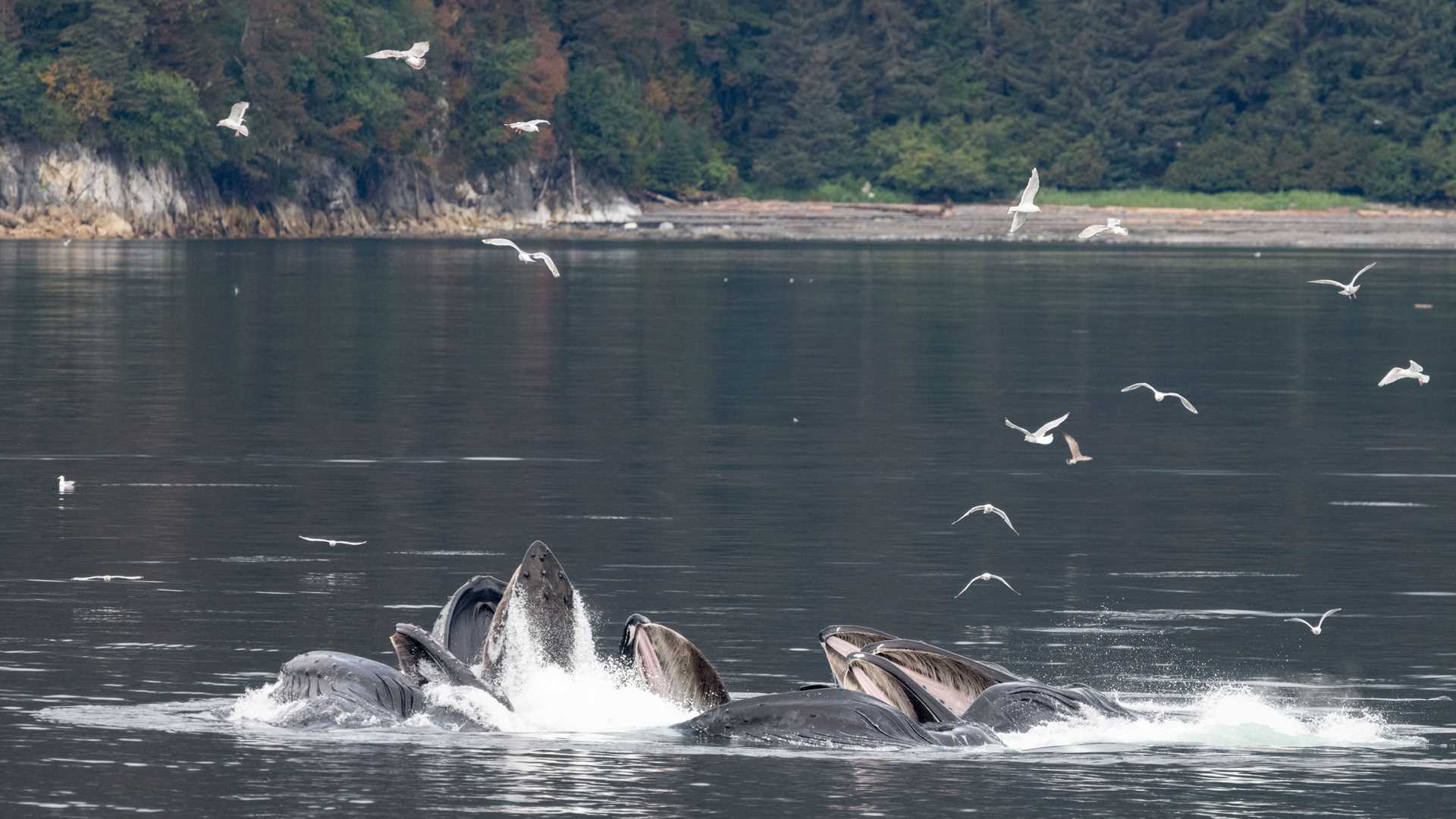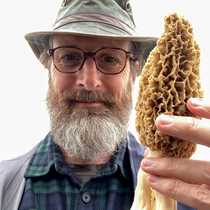A green buoy lists hard in the incoming tidal current. Anchored in about 30 feet of water, it marks the tip of Morris Reef, a rocky outcrop from the southeast corner of Chichagof Island. From that point, the ground drops precipitously on three sides until eventually reaching a depth of around 1800 feet. This combination of steep drop-off, nutrient-rich water, and fast moving tide provides the perfect conditions for what many of us would call the greatest show on earth.
We first see the actors, surfacing together, their fifteen-foot-tall plumes of wet breath carrying saltwater spray hanging in the air. One, then another, and another, seven in all in a tight group. Two, three, four breaths each, then, in slow motion, the black backs of these 40-ton megafauna pause, arch, and slip beneath the surface, their fifteen foot wide tails finally lifting out of the brine to show varied patterns of black and white on their undersides as they slip back out of sight. Humpback whales.
Throughout southeast Alaska, thousands of these 45-foot-long animals seek out schools of herring and other small bait fish, as well as masses of tiny krill to scoop into their giant mouths, filter out with rows of chitinous baleen, and swallow. Here, at Morris Reef, a few of a few score of these giant whales engage in something no other whales in the world do: cooperative, bubble net feeding.
A line of giant air bubbles, nearly as large as basketballs, surface in a giant arc beside our ship. That arc slowly turns into a broad spiral, nearly closing into a circle as 70 people rush to the rail to look down at the spectacle. As cameras click, six giant heads emerge from the water, mouths agape. Tiny silver herring not trapped, flip one way and the other, narrowly escaping the trap.
The whales remain near the surface alongside the ship, taking a handful of breaths before throwing their massive tails into the air to dive back down, regroup, and do it again.







